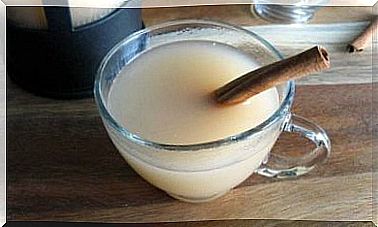Writer’s Callus: Causes And Treatment

Writer’s callus – also known as a writer’s bump or nerdy bump – is a thickening that appears on one of the fingers of the hand due to constant friction from using pencils, pens, and other writing implements. Can we get rid of it?
While not a health concern, this callus is unsightly and can become irritated. For this reason, there are those who are looking for a useful treatment to reduce its size or eliminate it.
Fortunately, there are several options for eliminating it. In this space we will deepen the topic.
Why does the writer’s callus appear?
As an article published in American Family Physician explains well , corns are the consequence of a physiological response of the skin, known as “hyperkeratosis”.
The latter appears as a result of constant pressure or friction of the skin with a certain type of material.
In particular, writer’s callus appears due to the continued use of writing tools, such as pens, pencils, highlighters and colored pencils, for example.
When we exert some pressure against one of the fingers of the hand – be it the middle or ring finger – these elements form a swollen-looking callus, composed of dead cells.
Its main function is to protect the underlying skin, which could otherwise become irritated or develop infections.
Although harmless, it is annoying and gives an unsightly appearance to the finger. For this reason, sufferers are often looking for solutions to mitigate the problem.

Recommended treatments for writer’s callus
There is no surgical treatment to get rid of corns altogether. Yet, as the American Academy of Dermatology Association explains in detail, most of these tend to disappear following the suspension of the friction process that is responsible for them.
In the case of writer’s callus, there are a few approaches that typically work. However, they do not give immediate results and it is necessary to act patiently, so as not to cause further injury. Take notes!
Exfoliation
The first recommendation to follow to minimize the appearance of writer’s callus is soaking and exfoliation. According to information published by the Mayo Clinic, this simple process softens the skin and removes accumulated dead cells.
- To perform this procedure, start by soaking your finger in hot water for 10 minutes.
- Then, with a pumice stone or nail file, carefully scrub the callus. The idea is to get rid of dead cells.
- Repeat every day, until you notice improvements.
NB: do not try to cut the callus in any way, as this could promote an infection.
Hydration
The American Academy of Dermatology Association recommends applying moisturizers based on salicylic acid, ammonium lactate, or urea.
These ingredients help to soften the callus of the writing and, little by little, decompose dead cells. Alternatively, you can use some household products to moisturize:
- Aloe vera gel.
- Coconut oil.
- Shea butter.
- Castor oil.
- Vitamin E.
- Olive oil.
Remedy based on aspirin
The ideal is to apply products that contain salicylic acid, prescribed by a dermatologist. However, either as an option or as a supplement to the therapy, you can try applying simple home remedies based on aspirin.
According to a study by the Clinical, Cosmetic and Investigational Dermatology , salicylic acid acts as a keratolytic agent and offers relief from dermatological problems.
- To make this remedy, grind 3 to 5 aspirin tablets into a powder.
- Then, moisten it with water, until it forms a batter.
- Apply the preparation on the callus, rub carefully and wrap for about 10 to 15 minutes with a bandage.
- After the exposure time, remove the batter and rinse.
- Repeat the application every day, until the callus has reduced.
Prevent Writer’s Callus
If you write regularly, preventing writer’s callus becomes difficult. Either way, there are some simple steps to take that can help prevent this bump from appearing. In the next lines we will talk about the main ones:
- Wear finger protectors when writing. Thick bandages or a pair of cotton gloves can help protect the rub fingers against writing instruments.
- Get some pencil grips. Another way to put a barrier between the pencils and your finger is to use a rubber or foam grip. This tool is applied on the pencil or pen (but some of these tools already have one built in).
- Choose pens with gel ink: this variant requires less pressure when applied to a sheet of paper. As a result, pressure on the finger is reduced.
- “Let go”: that is, try not to apply excessive force when writing. Avoid applying too much pressure when applying the pencil to paper. Also, take breaks and move your hand to relax it.

Ask for a dermatological consultation: yes or no?
Since it is a harmless lesion, usually the writer’s callus heals on its own over time, without the need for the intervention of a dermatologist.
However, the advice is to ask for a consultation in the event that the treatments described do not give results. The professional can propose other types of therapy, if he deems it necessary.
Finally, it is important to seek specialist assistance in the presence of symptoms of infection. This includes symptoms such as redness, pus, pain, inflammation or bleeding. Keep this in mind!









